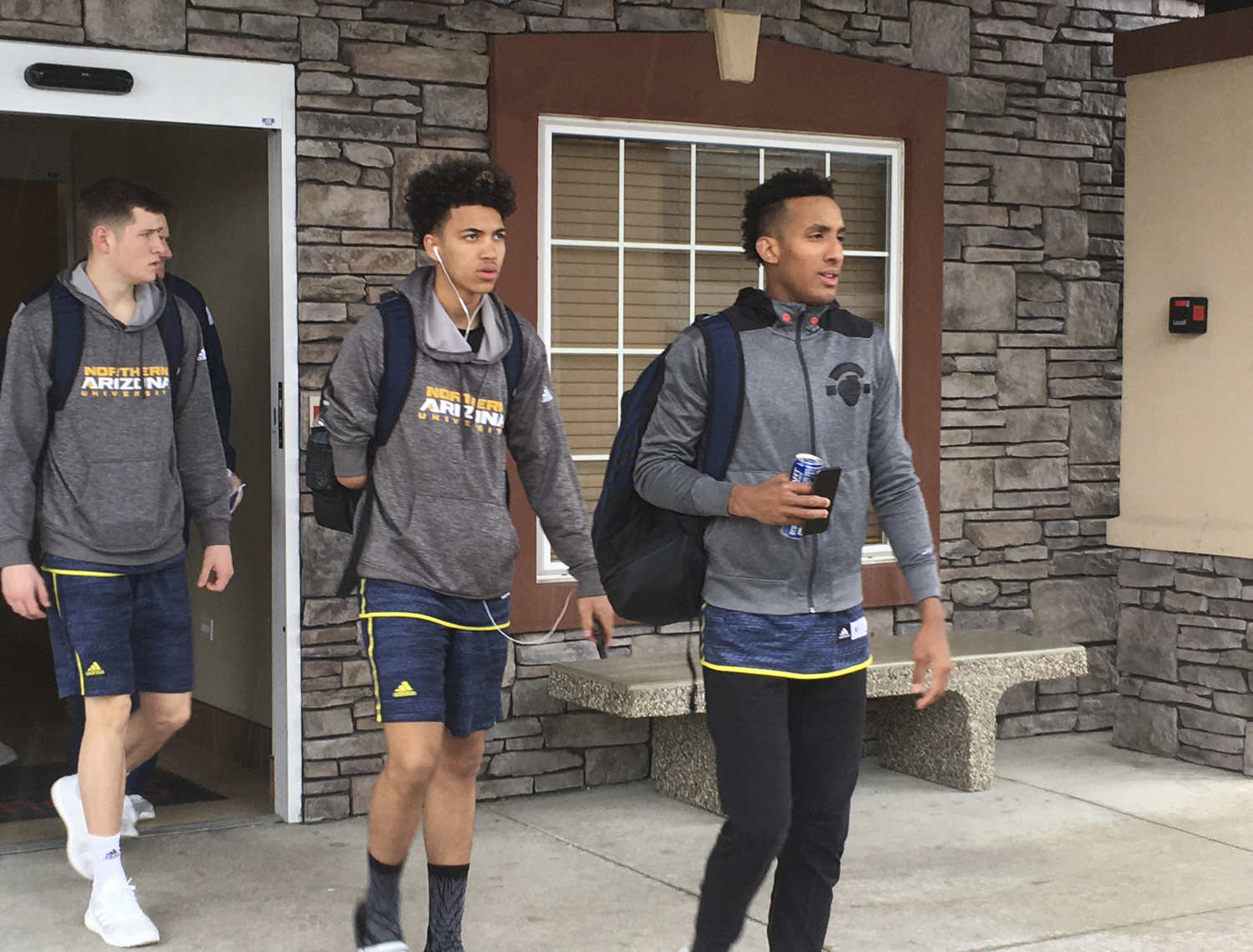Travel an extra grind for Division I’s smallest schools

In this Jan. 5, 2018, photo, Northern Arizona basketball players Luke Avdalovic, Omar Ndiaye and Gino Littles leave the team hotel in Ogden, Utah to board a bus for their next game in Pocatello, Idaho. Unlike high-major programs that fly on charters and eat at nice restaurants, the Lumberjacks fly commercially and eat at chain restaurants to save money. (AP Photo/John Marshall)
POCATELLO, Idaho — As the bus rolls past mileage signs for places like Malad City, Arimo and Woodruff, the long frames of Northern Arizona’s basketball players splay across the seats. Heads rest on makeshift pillows of jackets and backpacks, legs stretch across aisles, feet rise above headrests.
Outside, flurries dance in the headlights as roadside reflectors flash like car turn signals. Yellow weed stalks, evidence of a recent thaw, peek through the white blanket along the highway.
Pockets of dense fog envelop the bus, visibility measured in yards for perilous moments before thankfully clearing.
The players are oblivious to the cold world outside. Their only concern is finding comfort on this opening three-hour leg of a two-day return to Flagstaff, Arizona.
“It’s pretty hard travel after a game,” NAU coach Jack Murphy said. “You want to get home, get the guys some rest on their day off, but it’s a long day of travel on their ‘day off.'”
Travel is one of the most arduous aspects of college basketball. Hours upon hours every season are dedicated to getting to the next town, buses and planes essentially becoming players’ and coaches’ mobile second homes.
Some have it easier than others.
At the highest levels of Division I, buses park next to charter planes filled with spacious seats, teams’ schedules based on when the runway is open. Convenience affords efficiency: Practice at home, fly out in the evening, play the next day, head straight home.
Travel at the low-major level can feel like “Planes, Trains and Automobiles.” All that’s missing is the train and Del Griffith.
Charter flights are not within the smallest D-I schools’ budget, so commercial is the only way to go. That means long security lines and clock-watching gate waits, just for the opportunity to fold into seats barely big enough for averaged-sized humans.
Six-foot-10 and a middle seat is like 5-9 squeezed into a toddler car seat.
“I’m hurting for like two hours and when I get up, my knees finally get back to normal,” said Isaiah Thomas, NAU’s 6-9 junior forward. “It’s not enjoyable.”
Nor is planning.
The dilemma: Early-morning practice before flying out or a pre-sunrise departure to practice later at the destination? For the return, leave early on little sleep and rest later or sleep in and get back later?
No matter how coaches work it, the players end up tired.
“You have to factor it in,” Sacramento State coach Brian Katz said. “You try to convince your guys, you’re 19 years old, you shouldn’t get tired from anything. But in your mind you try to account for it because it’s a factor for sure.”